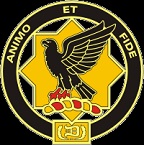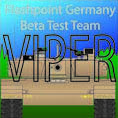Viper6
Posts: 211
Joined: 6/20/2005
From: Morris, MN
Status: offline

|
quote:
ORIGINAL: carnifex
A .50 caliber FMJ round, fired vertically, will penetrate a 1 inch pine board up to 5 feet under water. Fired on an oblique angle, the penetration is reduced by 1 foot.
A .30 caliber FMJ round, fired vertically, will not penetrate a 1 inch pine board at 2 feet under water.
Military FMJ rounds do not "explode" or expand. Under water they will simply expend their energy and sink. Whatever Mythbusters was firing was not what you would have been strafed with, that's for sure.
"Fragment" is generally the word used, and military FMJ rounds will indeed fragment on impact - in fact the current NATO standard 5.56mm round gets almost all of its killing power when it fragments on impact with flesh. Fragmentation depends on ammo type and velocity, generally a bullet will fragment on contact with human flesh anywhere above ~2800fps, water should be slightly harder durring a high-velocity impact, but the number should be about the same. Mythbusters didn't do a very good job of testing this as most of the weapons they used were either handguns (800-1100fps) or high-power rifles (2800-3200fps). The 2800fps number is based on FMJ ammo, while a AP, APSC, or SLAP round would improve water penetration it will also decrease the likelihood of a lethal wound should the round actually hit anyone. Mythbusters though was probably using standard civilian softpoint ammo, which would have made fragmentation more likely.
Now, I don't know as much about WWII aircraft weapons as modern systems, but don't most aircraft use explosive ammo to increase damage to other aircraft or ground targets? If that was indeed the case in WWII those rounds should not have penetrated water at all but simply exploded on impact.
_____________________________
Alex Clark - Viper
Flashpoint Germany Beta Test Team
Flashpoint Middle East Beta Test Team
Supervising Lighting and Sound Technician,
University of Minnesota, Morris
|
 Printable Version
Printable Version





















 - Not an F4F in sight.
- Not an F4F in sight.  - German M48s (Pattons!) vs US M41s in North Africa.
- German M48s (Pattons!) vs US M41s in North Africa.  - valiant American sailors steal a U-boat in the middle of the Atlantic, then have to fight off German subs, destroyers and single-engined fighters.
- valiant American sailors steal a U-boat in the middle of the Atlantic, then have to fight off German subs, destroyers and single-engined fighters.  - same tank lineup as PATTON, with the valiant American defenders immolating Panzermeister Robert Shaw by rolling barrels of gasoline at him.
- same tank lineup as PATTON, with the valiant American defenders immolating Panzermeister Robert Shaw by rolling barrels of gasoline at him. 

 New Messages
New Messages No New Messages
No New Messages Hot Topic w/ New Messages
Hot Topic w/ New Messages Hot Topic w/o New Messages
Hot Topic w/o New Messages Locked w/ New Messages
Locked w/ New Messages Locked w/o New Messages
Locked w/o New Messages Post New Thread
Post New Thread